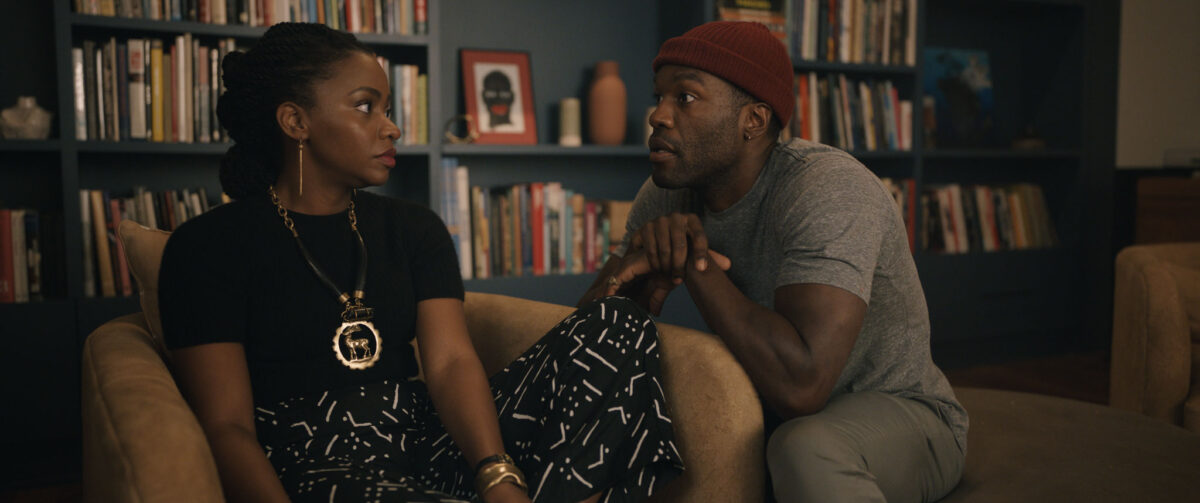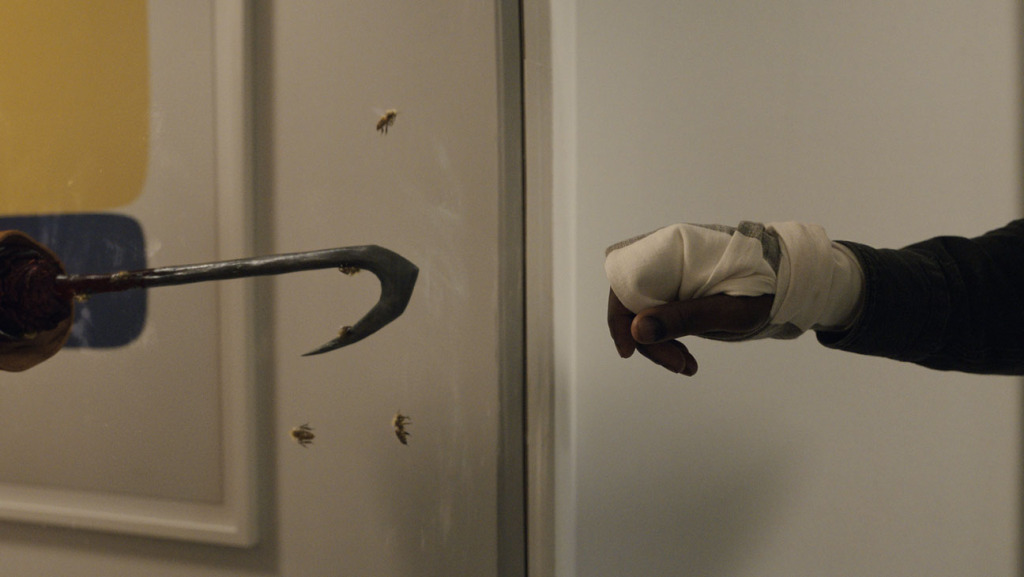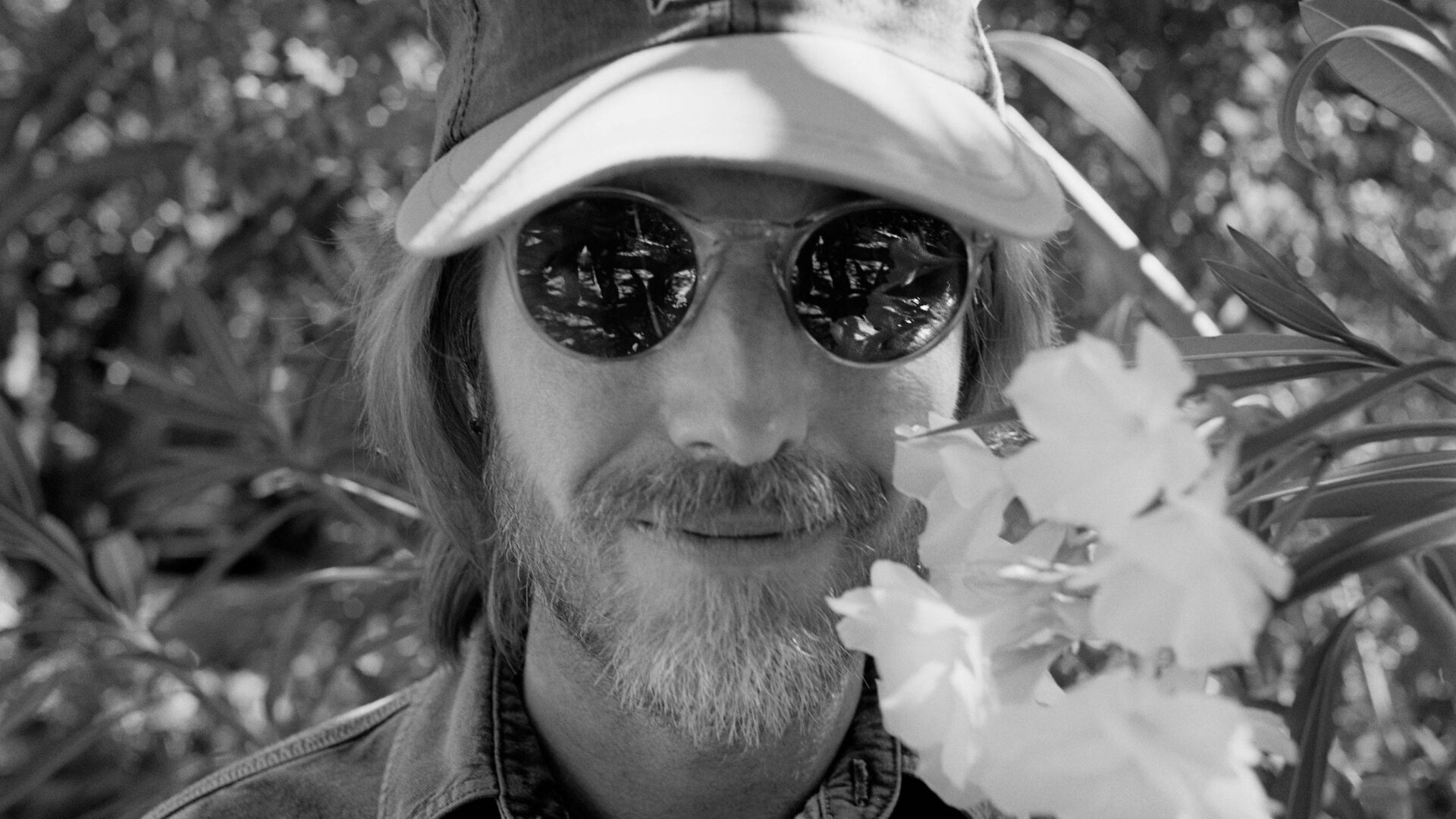Artist Anthony McCoy (Yahya Abdul-Mateen II) is searching for something. Something that all creatives do when the flowing water of ideas suddenly runs dry. Inspiration. He’s on the cusp of a big art gallery show that thirst leads the promising Chicago visual artist to Cabrini-Green. Where in the 1992 iteration of Candyman, where two towers of apartment housing stood tall. In the present day, the subsidized housing has given way to gentrification. In the surrounding area, there are upscale accommodations with wide windows, marble countertops, and sprawling stairways. Places where McCoy stays with his girlfriend and art gallery directory, Brianna (Teyonah Parris). The construction of this new phase within Chicago almost feels like a weed that’s gathering its roots and choking the past away.
On his search for a spark, McCoy meets a man named William Burke (Colman Domingo), a long-time resident of Cabrini-Green. He tells the story of Candyman, but not the one that we initially are familiar with. See, to him, Candyman was a man named Sherman Fields (Michael Hargrove). He had a hook for a hand and dawned a coat auspiciously, like the Candyman legend we know from three previous films. Fields gave candy to the neighborhood kids, but was framed for pieces showing up with razor blades. The police force then beat and killed him. In a grave tone, Burke recalls as a young man seeing the true face of fear.
The 1890s. The 1970s. No matter the time, there’s a trail of blood and injustice concerning Black men and violent acts committed against them. At some point, the energy that the urban legend contains has to grow. Director/writer Nia DaCosta, along with co-writers Jordan Peele and Win Rosenfeld, made conscious choices to make the Candyman tale apply to modern content. He still is the writing on the wall. The whisper in the classroom. However, through his vengeful killings beyond the grave, it’s history’s scream of Black bodies forgotten. In a country that is currently debating things such as critical race theory. To tuck away the ugliness of our history like slavery would not heed why it was a heinous act, to begin with. Those who don’t learn the past are doomed to repeat it. By saying his name five times in the mirror, DaCosta makes it like an incantation against past wounds.

Photo Credit: Universal/MGM
There’s an interesting twist that the movie does with the urban legend. Specifically, the story of grad student Helen Lyle (Virginia Madsen) from the first film. Brianna’s brother, Troy (Nathan Stewart-Jarrett) tells the story from the perspective of Helen going on a killing spree. Then kidnapping a baby before the community saves it as she plunged herself into a bonfire. Later in the film, that gets corrected through a revelation in the third act, but every telling of these stories is different. It just depends on the person and the generation. DaCosta used Chicago-based puppeteers Manual Cinema for these flashbacks; which were both haunting and interesting. The parallels between Anthony and Helen’s experiences with Candyman are vastly different.
In the 1992 film, Helen was looking to understand the story for personal gain and admiration. Like taking minerals out of the earth, she wanted to extract this legend, which struck fear in the hearts of people she couldn’t understand. Anthony seeks it and slowly becomes it. A simple bee sting sends his body into a metamorphosis much like the styling of David Cronenberg’s 1986’s The Fly. His arm begins to rot, and he slowly picks at him. While becomes a conduit for something bigger than himself. Anthony literally becomes a physical embodiment of that. As if he is a living art canvas.
Anthony’s art draws from the plights of Black people. In the art exhibit, he displays his new Candyman exhibit, to the dismay of everybody there. Particularly dismissed by an art critic named Finley Stephens (Rebecca Spence). It’s only when bodies start piling up in connection with the painting that she takes an interest in it and Anthony. A rather morbid curiosity. As Anthony visits her, he says, “you love what we make, but not us.” A continuance of Helen Lyle’s beginnings and the people that surround Anthony, like sleazy gallery owner Clive Privler (Brian King). While Anthony is in his three-year slump, he questions whether his art style is doing more harm than good. It’s telling that people like Stephens and Privler want more of the same. They want the credit for retelling and explaining the pain of Black plight, but none of the warts and trauma that come with it. Finley and Clive discovery, but not pure allyship.
DaCosta depicts the killings from afar, aside from a rather brutal scene that comes in the art gallery. A lot of it is left for the audience to fill in the blanks. Although Candyman isn’t physically present, the heavy-handed nature of his mission can be felt. The sound design is there for you to hear and feel every rusty slash against flesh. Entwined with Anthony’s story is Brianna, who had a father that was also an artist. When she was younger, he committed suicide in front of her. She watches as Anthony deteriorates into something else. But she’s not without her own plight. She tries to advance her own career, but her prospective colleagues are only interested in her ties to the recent murders and Anthony. As if her job as a gallery director is more to display horrors like a haunted house.
Nia DaCosta’s Candyman is very much Black characters taking back the story of their legend. In creating Rock-n-Roll, many speak of Elvis Presley, but not of Little Richard. In-country music, it’s figures like Garth Brooks and not Robert Johnson. With Bernard Rose’s Candyman, the legend of Daniel Robitaille (Tony Todd) is told to us through white characters first. It’s this trivialness that sits in the 2021 version. The victims in this movie are white and almost invoke the spirit of Candyman like a joke or dare. Stephens brings up a point that McCoy’s Candyman’s art goes against what he’s doing because artists are among those who are gentrifiers. However, it’s the choice that LaCosta makes in displaying Black characters being young and successful. If we don’t tell our story, then we leave it to people who might get it wrong.
Older generations make their presence known in the third act. Anthony sees his mother, Anne-Marie McCoy (Vanessa Estelle Williams) where she tells him the story of Helen Lyle from her perspective. That shielding Anthony from it was burying a painful past that would catch up to him. It’s a baptism by fire. One that Burke intends to complete. In a degraded church, he helps push Anthony’s completion. The broken sidewalks and non-fertile grass forgotten by those prone to erase it needed a reminder.
So, Candyman is not just a spooky horror legend likened to Bloody Mary; he’s the product of unchecked biases and burning racism. He’s “the talk,” He’s the marching in the streets. He is the writing on the wall, but also a reflection of the blood-stained mirror throughout time. As Burke ends the story, he says that Candyman is how we deal with the fact that these things happen. The real horror is that there are so many and, unfortunately, more to come.













